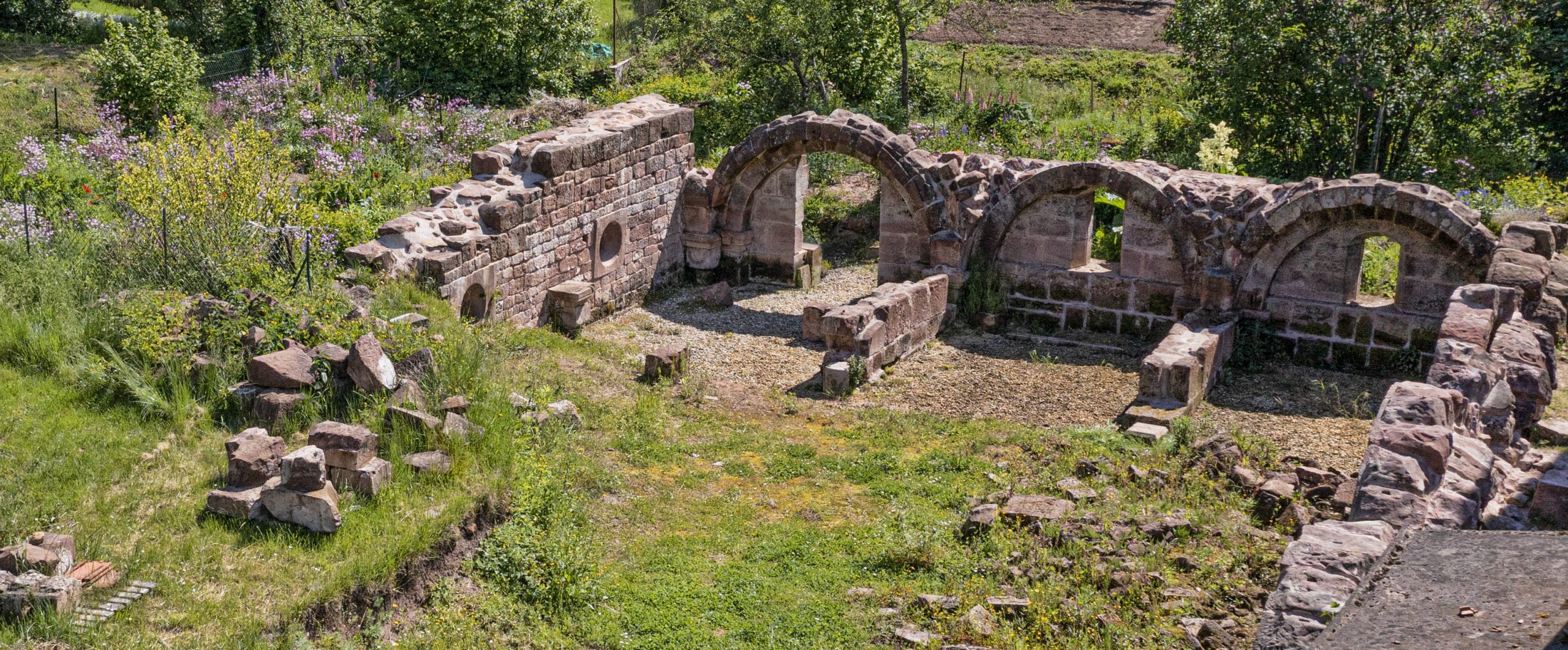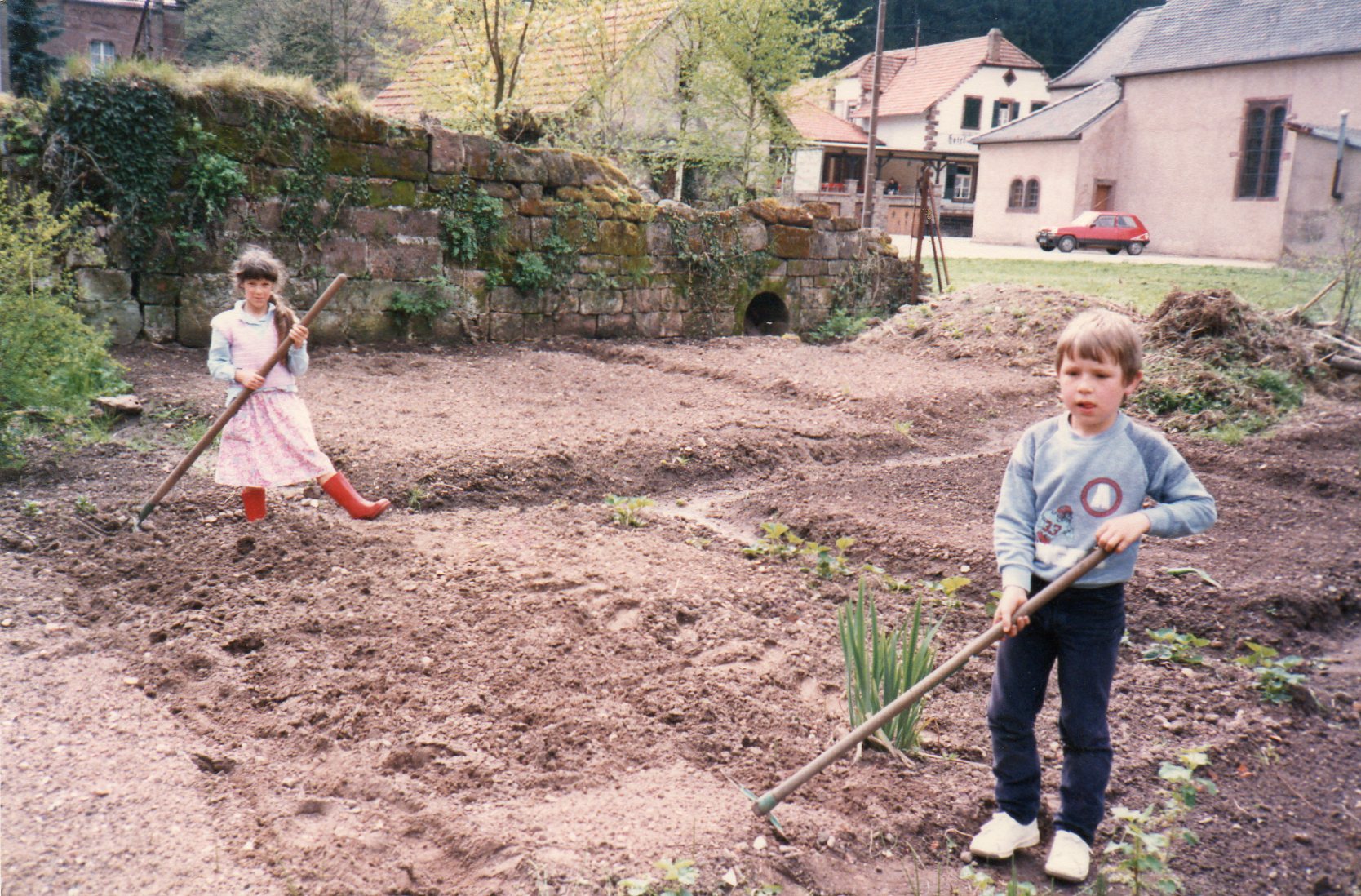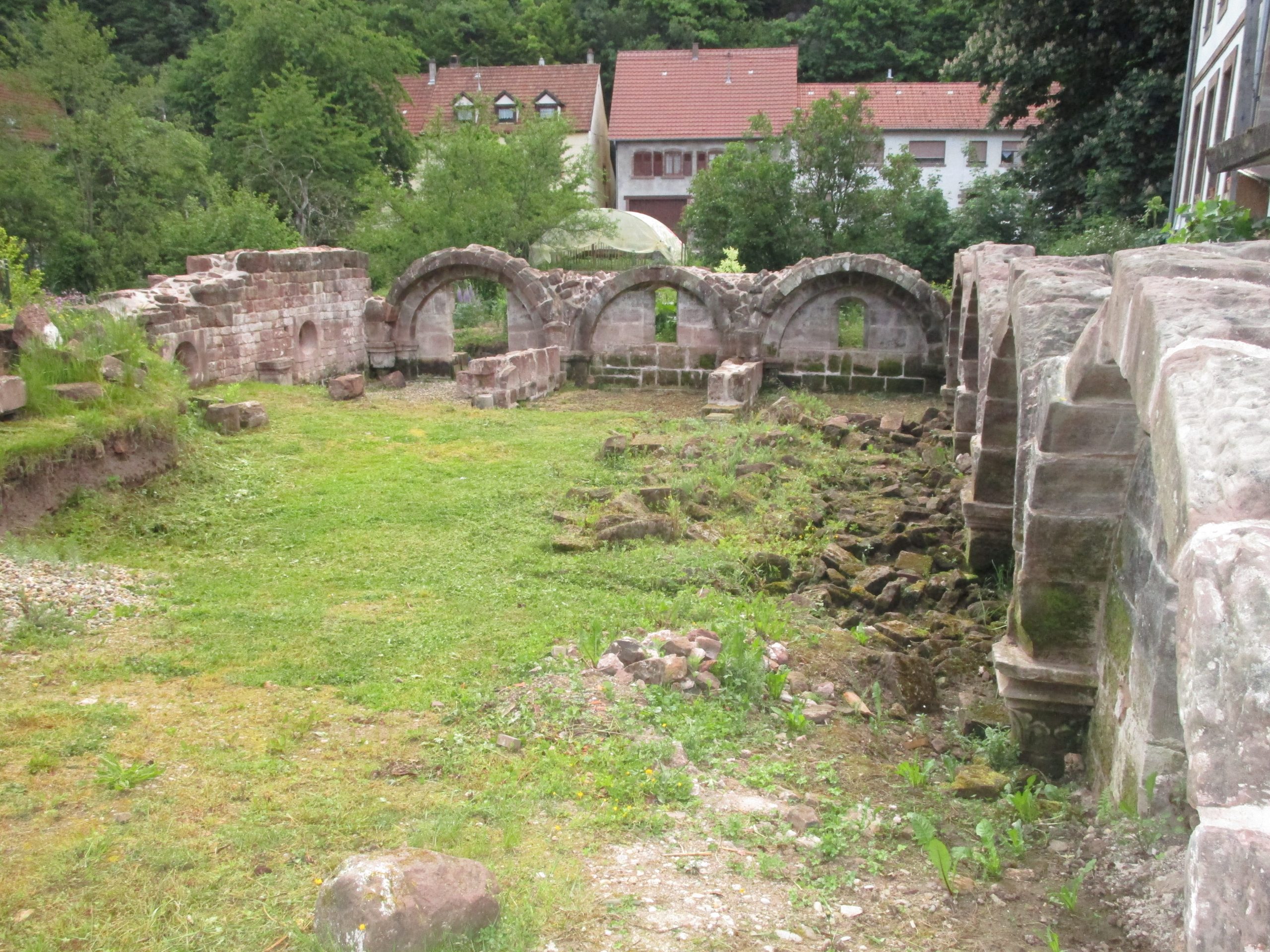
The abbey
The abbey today

Two children gardening on the abbey’s ruins
1987

The abbey today

The abbey today
Hidden between the protestant church and the old school of the village of Graufthal, the remains of this abbey represent a real buried treasure. In 2015, the AMVS signed an agreement with the municipality of Eschbourg, owner of the site, to safeguard this heritage. Through an archaeological diagnosis conducted the following year, the abbey is now gradually resurfacing.
Indeed, after a campaign of cleaning and archaeological surveys carried out by the members of the AMVS, the public establishment Archéologie Alsace undertakes an archaeological survey of 3 weeks. In 2020 and 2021, the walls were consolidated and the arches were raised.
At the moment, the exhibition “An abbey rises from the past” at the Maisons des Rochers retraces its history and the archaeological research carried out to date. An excavation is planned to lead to a complete valorization of these places.
The history of the abbey
Esquisse de l’abbaye
Date et auteur inconnus
Although the exact date of the foundation of the abbey is still uncertain, several theories have surfaced. According to some authors of historical chronicles, the abbey was founded by the bishop of Metz, Sigebaud, founder of the abbey of Neuwiller. Moreover, an ancient prayer book of Graufthal’s abbey also indicates that a count of Metz named Richard (964 – 986) would have been its restorer. Nevertheless, for other historians, the only founders and benefactors of the place were the “Folmar“, counts of Metz and Lunéville from the 11th to the beginning of the 12th century.
The first real document dates back to 1126. According to the writings, the Benedictine abbey of Graufthal was dedicated to Saint Gangolphe. However, the cult of this lord, who was born in the vicinity of Langres and was murdered on May 11, 760, did not develop until the 10th century.
It was only later, in the 12th century, that the abbey opened up to the Rhine influence and welcomed many nuns. The place was then subject to the obedience of the abbot of Sankt Georgen in the Black Forest. Generously endowed by its benefactors, the abbey of Graufthal made the most of its various possessions in Alsace Bossue, in the region of Dieuze, in the county of Lichtenberg or in the Kochersberg.
Finally, in 1553, after the abbey had been secularized following the Reformation, the last five nuns retired to Saint Jean les Choux, near Saverne.

